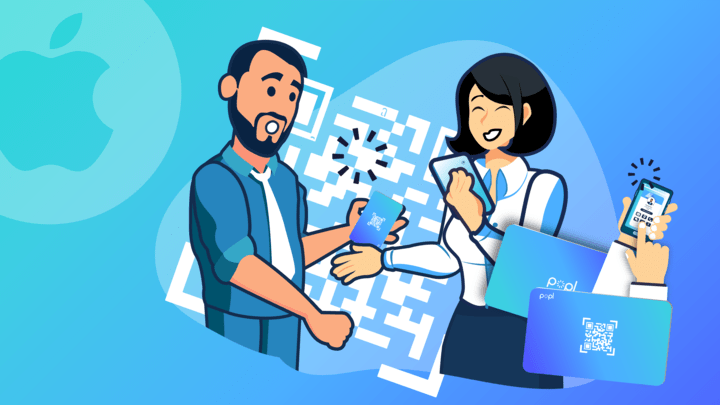Network ing events are a great way for people to connect, discover opportunities and grow in their professional lives. The best events focus on building community, allowing for deeper, more authentic connection. Today, we're sharing how to plan a networking event like none other: one that builds community and is just as fulfilling for extroverts as it is introverts.
ing events are a great way for people to connect, discover opportunities and grow in their professional lives. The best events focus on building community, allowing for deeper, more authentic connection. Today, we're sharing how to plan a networking event like none other: one that builds community and is just as fulfilling for extroverts as it is introverts.
Extroversion and Introversion by the Numbers
- 50-74% of people are extroverts.
- 77% of the population are ambiverts, or people who rest somewhere between introvert and extrovert. The Myers Briggs Type Indicator measures Introvert/Extrovert on a scale of 15 so an Introvert or extrovert score of 6-9 would qualify as an ambivert.
- 54.1% of the male population and 47.5% of the female population are introverts.
Understanding Extroversion vs Introversion
Chances are, you've got people in your circles you would classify as extroverts and others you'd classify as introverts.
The extroverts are the folks who always show up, can dazzle a room, and love to connect. The introverts may not show up, stand quietly to the side alone or with one other person and are masters of the Irish goodbye.
In broad strokes, extroverts get their energy from interacting with others, while introverts are energized by solitude.
Going deeper, there are four types of each and understanding and thinking about each when planning networking events will improve the experience for everyone.

Types of Extroverts and how to Create Opportunities for Them at Networking Events
Jungian psychology divides extroverts into four categories, because not everyone who is an extrovert shows it the same way. If you're familiar with the Meyers Briggs Type Indicator, these types will sound familiar.
- Extroverted sensors are inspired by things outside of themselves that they experience with their senses. They are focused on the present. Most of these extroverts learn best through demonstration, especially if they can get hands-on time. They build their beliefs from the ground up, don't lean toward speculation and love listening to people talk about themselves and their experiences.
- Extroverted thinkers rely on facts, data and logic. These extroverts are leaders and organizers. They don't deal in feelings and emotions and can often come across as cold or bossy, but it's simply how they approach decisions: by examining the data.
- Extroverted feelers are aware of the feelings and comfort levels of others. This is the person who is able to keep the peace and notices when someone is uncomfortable. Giving critical feedback is a struggle for extroverted feelers because they are driven to keep everyone comfortable and happy. These are the people who naturally adapt to the mores of whatever group of people they join.
- Extroverted intuitors are natural brainstormers who love to see connections between ideas. Unlike the sensors, who are planted firmly in the present, they love to think about the future and what could be.
Creating Touchstones for the Four Types of Extroverts When Building a Community
Extroverts are naturally going to enjoy networking events because they get their energy from others. When planning an event, though, thinking beyond this as giving what extroverts what they love is key. Instead, create experiences for the four types of extroverts to build relationships that are more authentic.
Give extroverted sensors things to look at, touch and manipulate.
Consider encouraging attendees to sign up for a Popl digital business card prior to the event. Why? Because these are the attendees who are going to love a digital business card and what it allows them to do when connecting. They want to see others' profiles pop up on their phone.
It's incredibly important for them to see and hear from others, so be sure someone at your networking event is speaking about their experiences. If you don't want to host speakers at your event, that's okay, but make sure to connect your extroverted thinkers with group members who are going to be interested in talking about themselves and sharing information.
Extroverted sensors are going to enjoy making new leads through the exchange of information.
Give extroverted thinkers a job and some data.
Provide opportunities for your extroverted thinkers to take the lead. These people want to do. Some ideas for how to manage their expectations and experience are to ask them to host a small discussion group during the event.
Having a clear idea of the agenda will make extroverted thinkers more likely to participate in future events. They like organization and a sense of purpose. They're going to find the people they need to and do what they want, but they'll come back for more if they know you put on well-organized events.
Differentiate your feedback expectations for extroverted feelers.
If you know who the extroverted feelers are, make sure you don't ask them what you could have done better. They wish all community agreements included a clause stating that only good feedback is necessary.
To make these extroverts happy and keep them engaged, include temperature checks for now the event is going and manage any discomfort. Or, better yet, ask them to. They will connect with others by discovering the needs, comfort level and interests of others.
Throw some newsprint on the wall for the extroverted intuitors.
Activities that involve connecting and big ideas will keep extroverted intuitors engaged and coming back for more events. While you don't have to literally throw newsprint on the wall, these are the types of things extroverted intuitors love.
For example, having flip charts, ipads or another writable space where people can write down the groups they belong to and then others can place a sticker if they belong to the same group is not only great for stimulating this group but also a great way to build connections.

Keep these around the room and then before it ends, ask everyone to for groups based on what they checked off. The common interest between them is a great time to grab each other's contact.
The extroverted intuitors will happily connect with others they share something in common with and will also help connect others who might not have obvious links at the moment, but would make sense to connect with down the line.
Our Favorite Extrovert-Centered Activities for Networking Events
In addition to the easel set up and community building activity mentioned earlier, try:
- having a QR code on table tents with a list of attendees and their professional and personal interests.
- having literature available (print or digital) with icebreaker questions.
- setting up smaller tables with groups where each person takes a few minutes to answer about what they do. Have one sample question that hits each type of extrovert.
Types of Introverts and How to Make Networking Events a Safe Space
Introverts aren't shrinking violets, by any means, but they do find large events and groups draining. Let's look at the four types of introverts and how to cater to them when designing networking events.
- Social introverts like small group settings instead of large crowds. They are the classic introvert most of us think of, having fewer closer friends rather than a huge network of acquaintances.
- Thinking introverts are daydreamers.They are often creative, crafting narratives and spending time focused on things that could be. When done thoughtfully, they can benefit from working with extroverted intuitors. More on this later!
- Anxious introverts, as their name suggests, avoid crowds because they make them anxious. These people respond to groups by feeling awkward or shy. Asking these types of introverts, at the start of an event, to introduce themselves or participate in an icebreaker is their worst nightmare.
- Restrained/inhibited introverts are the processors of the group. When building community at a networking event that includes restrained/inhibited introverts, include opportunities for follow up and future connections. They need time to think through things before they'll make a decision or state a firm position. Like extroverted thinkers they rely on data, facts and logic.
Encourage People with Introverted Tendencies to Connect Organically
Networking events don't generally create a sense of belonging for introverts, but it's easy to build this into your networking events to make the most of them. Include activities that align with introverts' needs and watch them thrive.
Encourage everyone to sign up for a Popl digital business card ahead of time.
Creating a thriving community at a networking event isn't easy but one way to make it easier is to get attendees to have a simple, non-threatening way to connect.

Rather than have to stand in front of a group and introduce themselves, encouraging folks to set up an online profile and include the answer to an icebreaker as the text under their name is a great way to allow for the same level of information sharing as the extroverts but without feeling awkward.
For example, say your icebreaker question is to share a fun fact they learned recently. Share this on the registration with directions for how to set this up on their digital business card.

Now, people can choose to share aloud, and others will share their fun fact through tapping phones or scanning QR codes.
Start your event with introverts hour.
Rather than have everyone arrive at the same time for a networking event, focus on community building by differentiating start times.
Invite introverts to come early. This allows them to get the lay of the land and connect in smaller groups with people who understand introversion.
Once the others arrive, they'll have found someone to hang with and will also know who at the event is an introvert who will prefer connecting quietly and one-on-one.
The extroverts will also know who the introverts are and won't bombard them with too much information.
Teach the method to your madness.
If you throw regular networking events, and want people to keep coming back, give them a peek behind the curtain.
Introduce the concept of the four types of introverts and extroverts and explain that you've set up your event with all eight types in mind to help get the most engaged members possible in the group.
Your extroverted sensors will especially love learning this and there's lots of great data that you can share for your extroverted thinkers and restrained introverts.
One example is to post the percentages of extroverts and introverts in the population. Does your event match up? Why or why not? Does it split by gender identity?
These are all great discussions that can be had in the large group, amongst small groups of introverts or during emails or texts shared after.
Encourage the right format for conversations.
Networking events can often feel like a party, but if you want to build community and foster better connections, the key is to allow opportunities for authentic connection.
Manipulate the space for areas for quiet, smaller conversations and also larger areas where people can gather.
Leave suggested conversation talking points in both places.
If you've inventoried guests ahead of time and know which of the 8 executive function types each person is, you can even pair people up. Additionally, having event photographers on hand can capture these authentic moments of connection, providing attendees with lasting memories and further enriching the community atmosphere."
Create Opportunities for Connection
Set your networking event apart with some of our favorite ways to build connections at networking events.
Introduce People
We suggest a registration form that allows you to find opportunities for connection.
Knowing what industry people are from and which of the eight executive functions guides them is perfect for matchmaking extroverts and introverts.
Here are some fun matches:
Extroverted Feelers x Anyone: EFs connect and use care to make sure everyone is comfortable so they fit in anywhere.
Extroverted Sensor x Thinking Introvert: Both are focused on creativity and
Extroverted Thinkers x Extroverted Intuitors: The perfect combo to get things done. The thinkers will look at the historic patterns and data while the intuitors consider possible long-term consequences, challenges and payoffs.
Share Resources
It's always a good idea to share. In the case of networking, when there are people who naturally won't mesh because of differences in executive function, you can uplevel your event by sharing information.
Create a simple handout of everyone's Popl QR code so that there's opportunities to find and connect online after the event. Which is a great segue into another great tactic.
Develop a Way to Connect Post Event
Your introverts may stick to one or two people, but that doesn't mean they don't want to engage. They simply have a finite resource: energy.
Having people put their executive function type on the digital business card makes perfect sense. At some point prior to the end of the night, ask attendees to replace the icebreaker answer with their executive function.
Why? Because you taught them about these 8 distinct types, they've now got a way to connect with anyone who was at the event, and they'll see their type and know the best ways for them to connect and find common ground.
Building Community adds Value to Your Attendees
By thinking about the various needs and behaviors of those attending your networking groups, you're adding significant value and showing your strong commitment to more than just getting people in the door.
Consider Online Platforms for Community Building
In-person networking is great, but for some people it's never going to be the ideal.
Remote networking, using online platforms, is a great way to build communities virtually. Not only can you reach people from a broader area, but you can also use functionalities like breakout rooms to allow for smaller group chats.
This way, introverts get the same chance for networking in a space where they'll thrive.
Encourage participation from everyone
When registering participants, ask for their executive function. You don't have to have anything more than a checklist that asks which of the 8 descriptions is most like them.
Acknowledge in the reminder email or when you open the event that you have different types of people and point out things you've done for their groups. Everyone will do what they're going to do but they will also be able to avoid the things they don't connect with and spend more time where they do.
FAQs
What is an introvert?
An introvert is a person who thrives when working in solitude or small groups. They recharge their batteries by being alone.
There are four different types of introverts, each determining the introvert's executive function and how they connect with the world. Introverts don't dislike people or groups, but they get tired from these things and need time to recharge.
They prefer working alone or with one or two partners versus larger teams.
What is an extrovert?
An extrovert is a person who thrives when working in teams or groups. They recharge their batteries by connecting with other people and being social.
There are four different types of extroverts, each determining the extrovert's executive function and how they connect with the world.
Extroverts don't mind alone time, but they find it draining and need social time to recharge. They prefer working with teams, collaboration and lots of discussion.
What is an ambivert?
All people have both extrovert and introvert qualities but usually one is pronounced. An ambivert's qualities are closer together on the spectrum so they can go either way, depending on the situation. These people are sometimes referred to as "extroverted introverts" or "introverted extroverts."
What is the major difference between introvert and extrovert?
The major difference between introverts and extroverts is what drains their batteries and what allows them to recharge. Extroverts are energized by interactions with people and working together. Introverts are energized by solitude or time with one other person and working alone.
Are introverts unfriendly?
Introverts, like extroverts, come in all stripes, including some that are unfriendly. Extroverted thinkers can come across as unfriendly but in a very different way. Introversion and extroversion are not qualitative assessments.
Final Takeaways
When it comes to networking with the goal of building community, consider the types of executive function that will be in the room and make sure to make the event comfortable for the many types of introverts and introverts who will attend.















